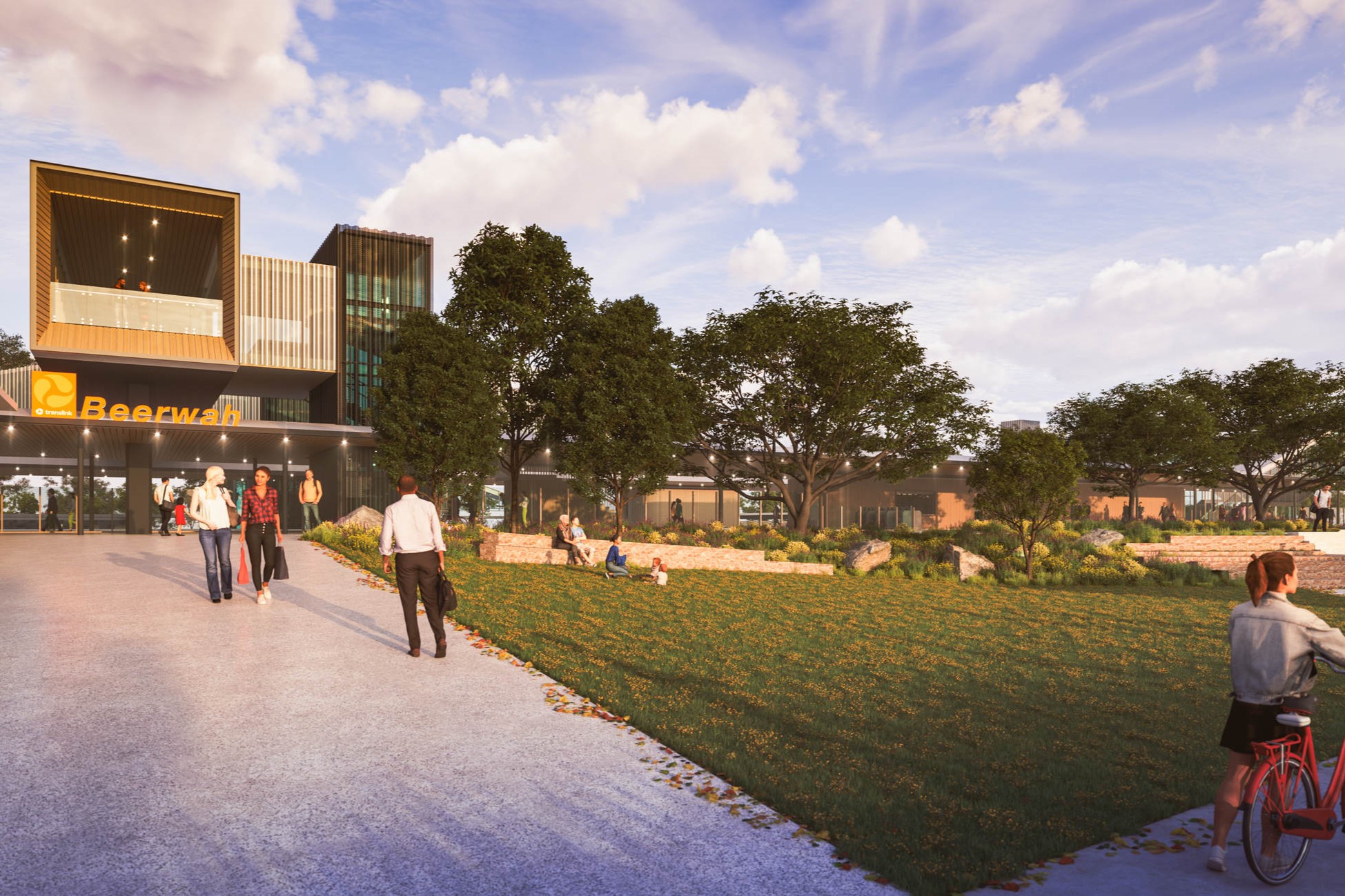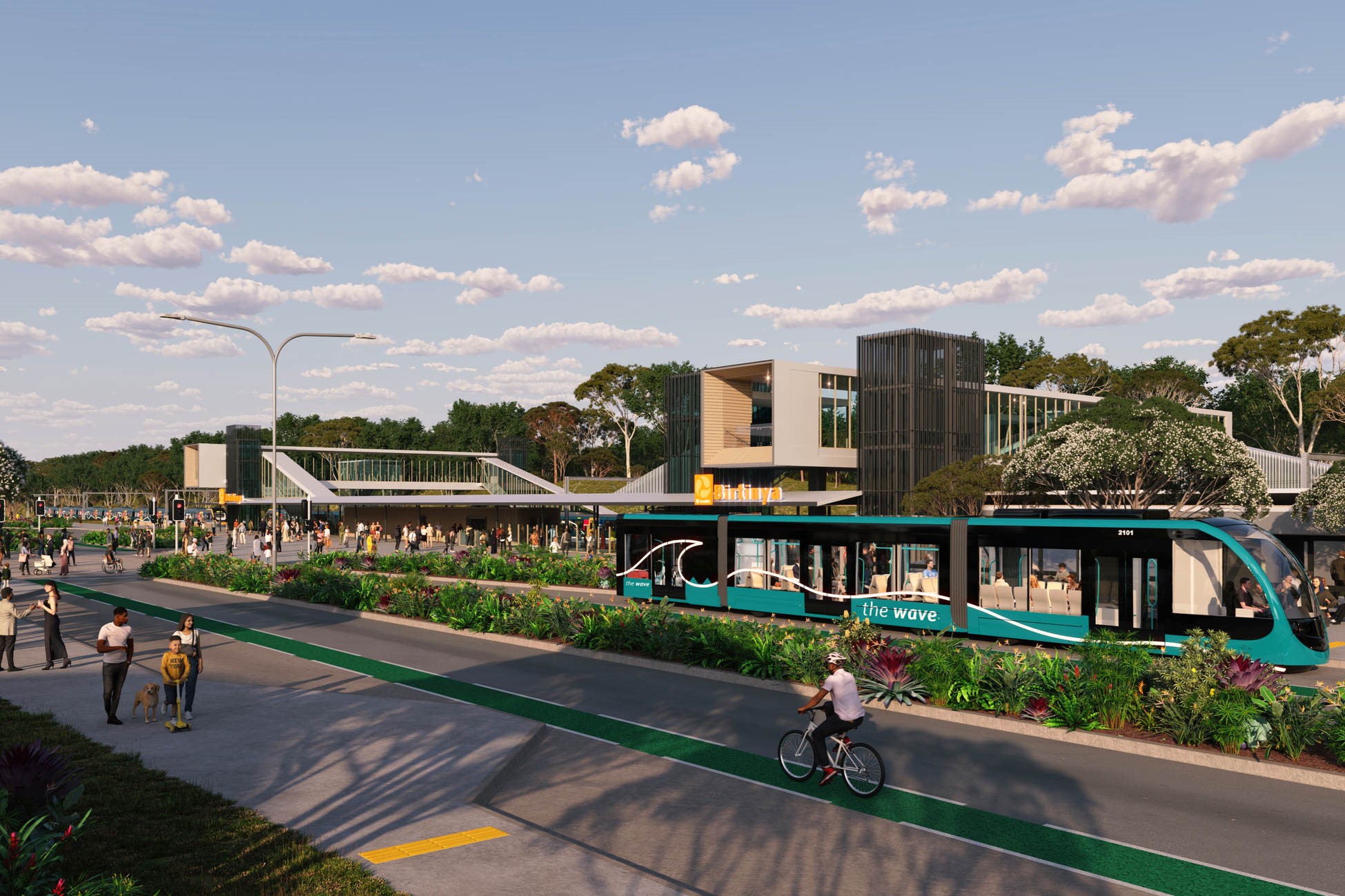The state government has released new details about its planned mass transit service on the Sunshine Coast, but transport advocates are calling for greater transparency around the multibillion-dollar project.
A Department of Transport and Main Roads (TMR) spokesperson has outlined more features of The Wave, which will include a 26km rail line between Beerwah and Birtinya, and metro-style buses connecting Birtinya to Maroochydore and the Sunshine Coast Airport, along with new stations.
They told Sunshine Coast News that both new and existing trains will operate along the rail line, while the metro buses could have a capacity of 170 passengers each and will run at the same frequency as the trains to ensure seamless transfers.
The Wave forms part of the state government’s 2032 Games Delivery Plan and is pitched as a transformative link in South-East Queensland.
“Once open, The Wave will be the fastest and most reliable way to travel between the Sunshine Coast and Brisbane in peak hour,” the spokesperson said.
“The rail component will operate using Queensland’s newest fleets, the (existing) New Generation Rollingstock (NGR) and (new) Queensland Train Manufacturing Program (QTMP) fleet.”
Want more free local news? Follow Sunshine Coast News on Facebook, LinkedIn and Instagram, and sign up for our FREE daily news email.
Each NGR train can hold about 960 passengers and, while the QTMP trains are still under construction, they are expected to offer similar capacity. The QTMP project, valued at $9.5 billion, will deliver 65 new trains and include the creation of manufacturing and maintenance facilities across Queensland by 2032.
The spokesperson said passengers arriving at Birtinya from Brisbane would transfer to the metro-style buses to complete journeys to the Maroochydore CBD and airport, and said they should be able to accommodate scores of people.
“Metro-style vehicles can comfortably transport 150 passengers, and 170 in event mode, and will match the frequency of rail services,” they said.
“As part of the Translink network, customers will be able to ride The Wave for 50 cents.”
A timetable will be released closer to the project’s opening date.
While the new details provide insight into the scale and ambition of the project, transport advocacy group Better Transport Queensland (BTQ) said key questions remain unanswered – particularly around long-term planning, service frequency and integration.

BTQ secretary Alex Jago said the group supported the rail line project but stressed the importance of ensuring the infrastructure was designed for long-term use and growth.
“It’s essential that the train stations be designed to allow for nine-carriage trains and to allow for good bus interchange (including metro and suburban buses) at each station,” he said.
“BTQ looks forward to a good design outcome in this regard and to the roll-out of a bus network designed to work with the new rail line.”
He raised concerns about whether the train and metro bus services would operate frequently enough to be a viable alternative to driving.
“Queensland has a habit of building expensive railway lines and then under-utilising them off-peak,” Mr Jago said.
“For this reason, BTQ calls on the government to commit to good all-day frequency on the rail line and, of course, on the busway component too.
“BTQ also calls on the government to release an indicative concept of operations for the rail network once this line has opened – including line pairings and peak, off-peak and Olympics-fortnight frequencies.”
He also questioned how metro buses would keep pace with train arrivals given the difference in capacity.

“A metro bus has about the same capacity as a single train carriage, so we’re looking forward to seeing how Birtinya will work as a transfer location,” Mr Jago said.
It could mean multiple buses would be needed to meet a single train’s passenger load during peak events.
Mr Jago also flagged concerns about the long-term impact of building a busway between Birtinya and Maroochydore, rather than extending rail.
“Any busway that is built will need to serve for at least two decades, not just the two weeks of the Olympics and Paralympics,” he said.
“BTQ is critically concerned that building Birtinya to Maroochydore as busway will get in the way of future rail extension when, not if, that becomes necessary.
“We call on the government to ensure space is reserved in the corridor where relevant.
“We also see an opportunity for the busway to deviate from the planned rail corridor, as it may be able to better serve existing development by doing so.”
Mr Jago said there was also a strategic opportunity to expand the suburban bus network around the region.
“Extending the busway component of The Wave west to Sippy Downs (with new and additional suburban bus services) and the university would be a logical extension of the system,” he said.





